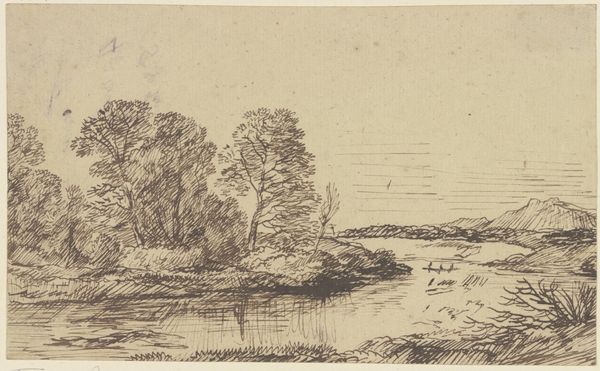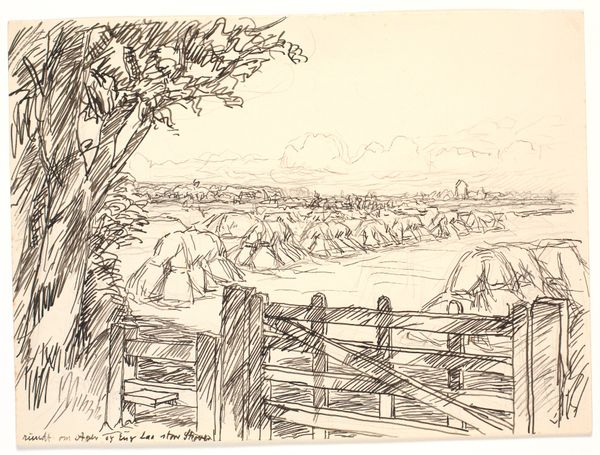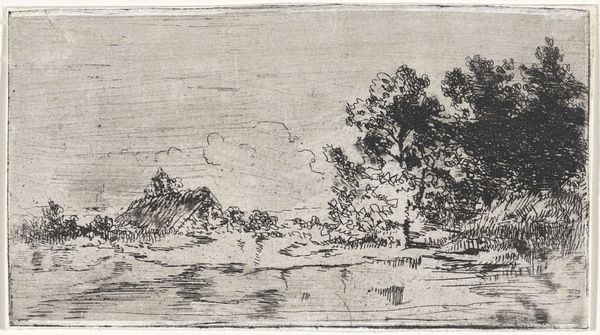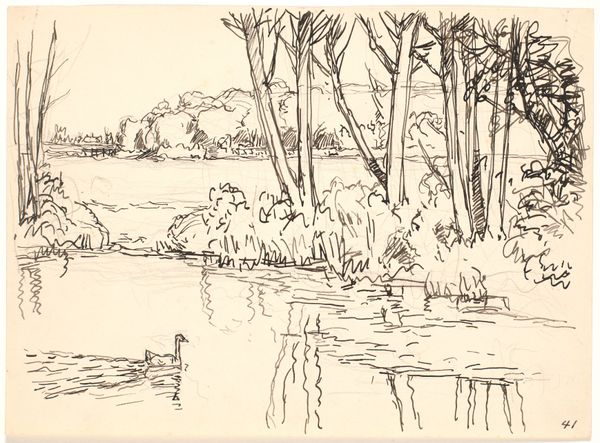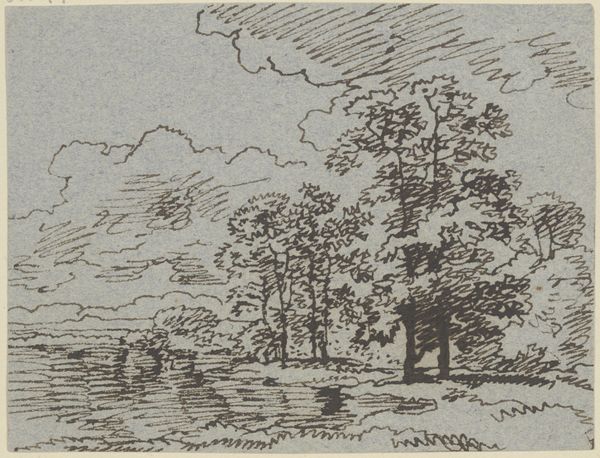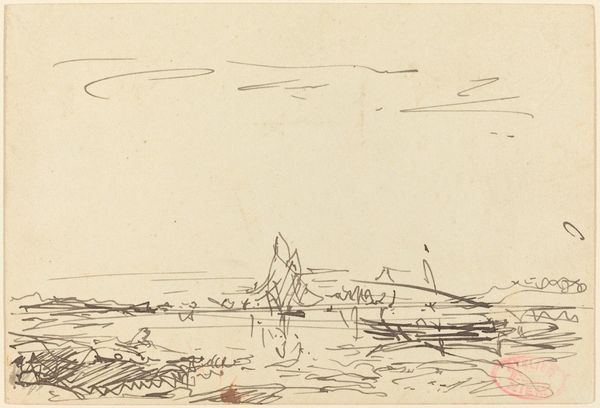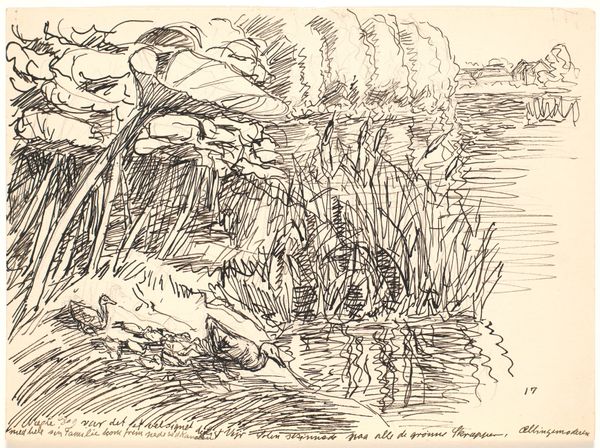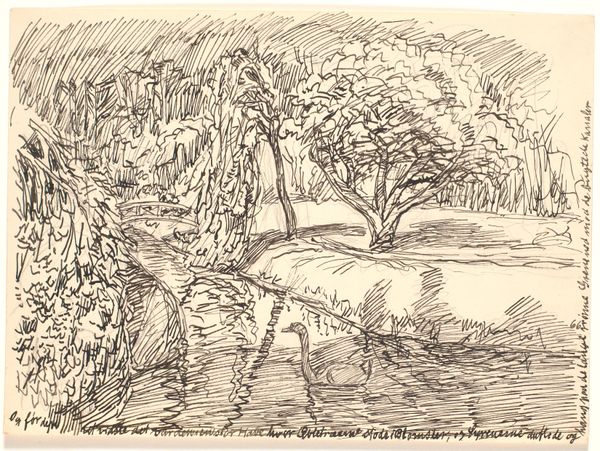
drawing, paper, ink
#
landscape illustration sketch
#
drawing
#
pen illustration
#
pen sketch
#
landscape
#
paper
#
personal sketchbook
#
ink
#
ink drawing experimentation
#
pen-ink sketch
#
pen work
#
sketchbook drawing
#
storyboard and sketchbook work
#
sketchbook art
#
realism
Dimensions: 254 mm (height) x 326 mm (width) (bladmaal)
Editor: This is "Og der gik Storken paa sine lange r\u00f8de Ben," or "And the Stork Walked on its Long Red Legs," a 1928 drawing by Fritz Syberg. It's ink on paper and feels very immediate, like a quick sketch. All those haystacks remind me of labor and harvest. What draws your eye in this piece? Curator: What I see here is not just a pretty landscape sketch but an articulation of rural labor through the materiality of ink on paper. The artist's hand, in repetitive strokes, mimics the repetitive labor of harvesting. Editor: That's interesting! So you're seeing the process of creating the drawing as related to the work being depicted? Curator: Precisely. Consider the ink itself—a manufactured substance, commercially available even then. Its ready availability allowed for a democratized mode of art-making, far removed from traditional oil painting's aristocratic connotations. Editor: So, the choice of ink itself challenges some high art boundaries? Curator: It certainly gestures toward it. Think about the accessibility of paper too. This isn't some grand canvas; it's a commonplace material, aligning the work with the everyday experiences of the agricultural worker represented. How does the title intersect with your interpretation? Editor: Hmm, it puts the focus on the stork, almost making the back-breaking work of harvesting a secondary element in the drawing. Curator: Perhaps Syberg is inviting us to question that very hierarchy – to consider the ‘insignificant’ details of labor with as much scrutiny as we might the natural world. Thank you, I hadn't considered that tension. Editor: Thank you! I hadn't considered all the layers of meaning conveyed just by the artist's choice of common materials.
Comments
No comments
Be the first to comment and join the conversation on the ultimate creative platform.
